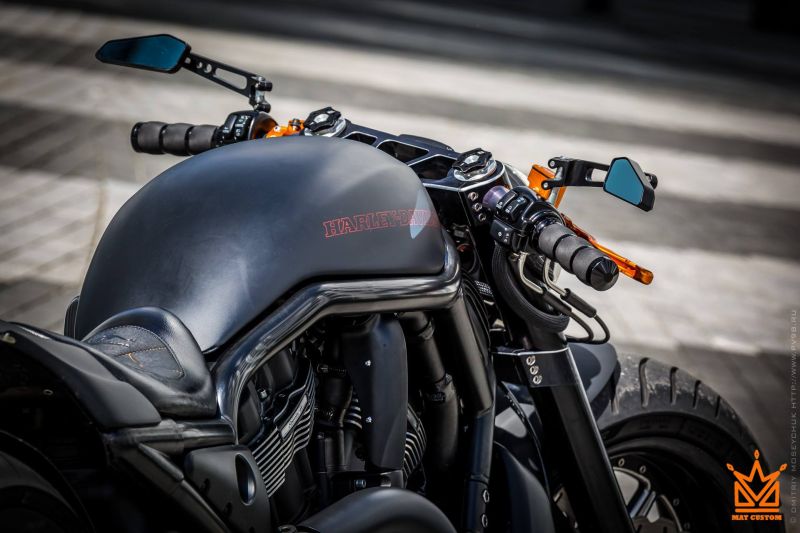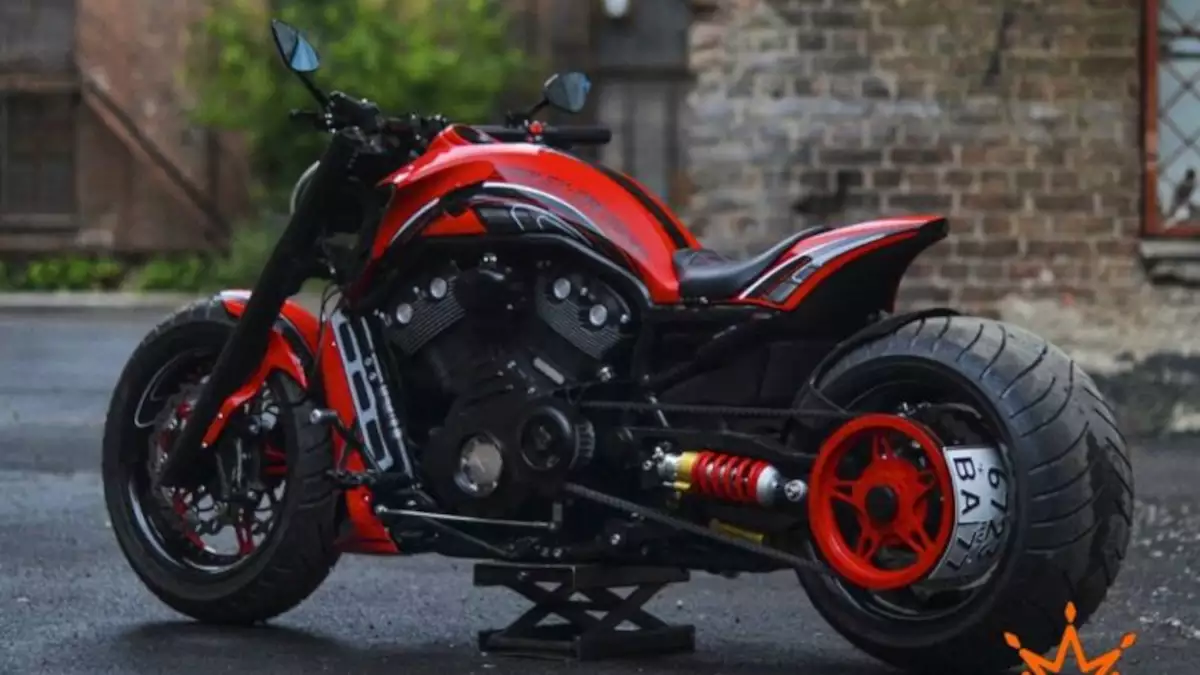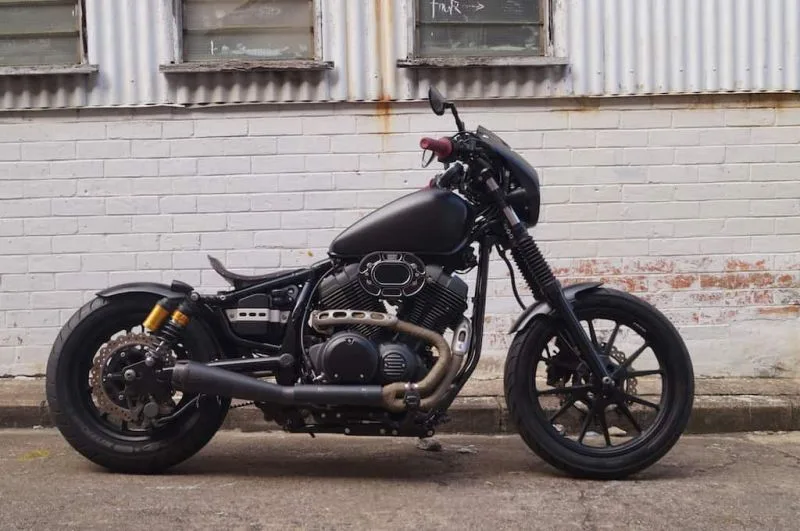Firstly, the team’s engineers designed and milled fork yokes with altered angles. The donor fork came from a Yamaha R1, with shortened feathers to give the motorcycle a more aggressive profile. A unique adjustment system for the clip-on angle relative to the fork feather was developed and implemented for the upper yoke.

Wheel rims in the style of ADV racing (with five thin spokes) were milled from blanks and painted. Custom-made front wheel hubs were also developed to accommodate 310mm brake discs, working together with bright orange “crocodiles” – Beringer calipers (of which “Moto Atelier” is the official representative). The renowned firm provided the brake and clutch master cylinder units.

To ensure the console swingarm works properly and safely, changes were made to the rear suspension. The team did not want to sacrifice the already small fuel tank, so they decided to stray from the beaten path of Western customizers, who usually install suspension in the center of the motorcycle. Instead, through the efforts of the engineers and mechanics, the tie rods and shock absorber were located on the side near the drive belt. The tank remained intact.

The rear brake disc, made of 40X13 steel, was constructed to be 325mm in diameter. Additionally, a new rear brake caliper mount was created from scratch.

The most important detail of the project was the fully milled console swingarm for a 330mm wheel, designed and manufactured by “Moto Atelier”. The team reinforced the output sprocket with an additional bearing, and the engineers created a new sprocket with a different gear ratio to improve the motorcycle’s initial acceleration.

The pattern style of ADV racing was also cut into the drive and wheel sprockets. A modified rear hub from a Honda VFR800 was installed. A short tail section made of fiberglass was sculpted, featuring bright LED lights. A custom-made “egoist” seat was stitched in, but there was no passenger seat.

There were many debates and options regarding the color scheme of the project. In the end, the team chose black with orange accents.

Lastly, the instrument panel was designed and milled, and electrical circuits were soldered. The team wanted to lighten the front of the motorcycle, so the gauges were placed on the left side of the false back on the frame.

The Vance & Hines kit was ordered from the US and went unaltered, as it proved difficult to obtain. However, the team occasionally thought about welding their completely custom-made exhaust system. As it turned out, such an exhaust was installed on three-quarters of the motorcycles in their category at Harleydays.









